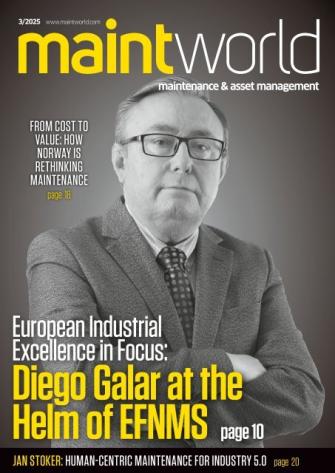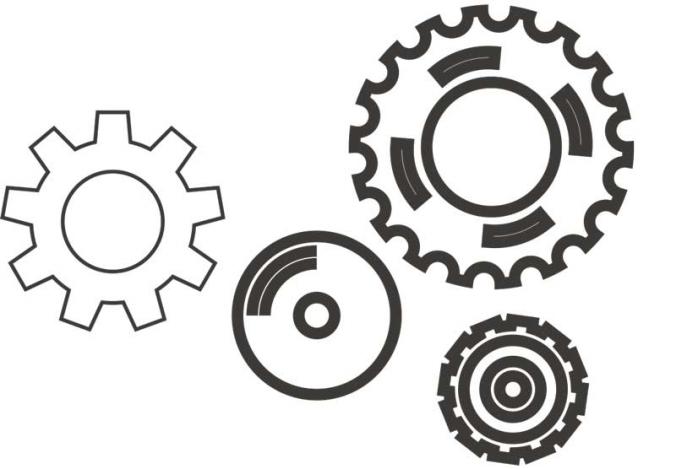Improving Reliability and Maintenance Through Culture Change
Everyone talks about the need to change their organization’s culture in order to successfully institute new ways of doing things in the reliability and maintenance arena. However, if you question those who advocate cultural change you will find that in many instances they are not entirely certain what this means, or how to make this type of change happen.
Niccolo Machiavelli (1469-1527) stated in his book The Prince that “There is nothing more difficult to take in hand, more perilous to conduct, or more uncertain in its success than to take the lead in the introduction of a new order of things, because the innovator has for enemies, all of those who have done well under the old conditions, and lukewarm defenders in those who will do well under the new.”
Machiavelli clearly understood the difficulties associated with change when he made this statement in The Prince almost 500 years ago. Truthfully, change is probably the most difficult thing for us to accomplish as part of our jobs, yet it is something that is a critical component of success in today’s ever-changing work environment.
Characteristics of a Successful Change Effort
How do you get people who have done well under the old order of things to embrace something new and different? How do you get those who believe that a change is needed but are concerned about the ultimate outcome to initiate the effort? The answer to these questions is not an easy one. However, there are essential elements that need to be in place to get an organization to embrace, actively support and make a change effort a success. If any of the following elements are missing from the equation, problems will occur:
• Dissatisfaction with the current state
• A clear vision of the future
• An understanding of organizational culture
• A strategic approach and mind set
• Defined supporting tasks and tracking
• A sustainability process.
Dissatisfaction
It is easy to create a high degree of dissatisfaction when a company is on its way out of business. Everyone has seen or read about companies who have been in this position and have turned themselves around - going from being on the verge of closing their doors to one of being a leader in their industry. In these cases it is easy to get people to recognize their dissatisfaction and want to make the necessary change for the better. What about companies that are marginally profitable or even successful? How do you get them to recognize the need for change in the form of continuous improvement? The answer is that you need to create a mismatch between the current “as-is” state of the business and what everyone collectively sees as their “to-be” state. If this is done correctly then dissatisfaction with the current state of affairs will be the result.
Figure 1. The Change Pyramid ©.
The Vision of the Future
The first step in the change process is to create a clear, universally understood vision of the future. It is assumed that this vision will be far different and vastly improved in comparison to your current reality. What, then, is a vision? You can define it as follows:
“Vision is an idealized picture of a future state, one that is integrated into the organization’s culture. It provides a stretch, yet it is achievable over an extended time period with a great deal of work and collective focus by the entire organization. Because it continually evolves, it is never fully achieved.”
The Change Pyramid
Having a clear vision in place is a good start but there is a great deal more that is involved if you expect to successfully implement change. The problem is that change often only addresses the task level of the work. These are the tasks we perform every day as we execute our work, and this is what management sees when they see problems.
However, tasks that are not executed well are not the root cause of the overall problem. It runs much deeper. The root cause actually runs through two additional levels of what is referred to as The Change Pyramid (Figure 1). These levels as shown in figure are the Strategic Aspects of Change and the Organizational Culture. If the elements associated with these levels within the change pyramid are not addressed then long-term sustainable change is unlikely.
The Four Elements of Culture
You can do everything else correctly but if you do not address the organizational culture your foundation will be undermined. The foundational level of change – the Organizational Culture – is composed of four elements:
- Organizational Values are those basic beliefs that an organization has tested over time and collectively holds to be true.
- Role Models are those people at various levels within the organization who people emulate when it comes to work performance.
- Rites and Rituals include the work processes (rituals) and how we reinforce their behaviour (rites). Rituals are what we do as part of our day-to-day work and rites are the reinforcing part of rituals.
- Cultural Infrastructure is the hidden organization within the organization. It is the “unofficial” manner in which information (valid or invalid) flows throughout the organization. It is also the way that people are influenced to behave within the context of the existing organization’s culture.
The Strategic Elements of Change
At the strategic level there are eight key elements that need to be addressed in order to achieve successful change. They are referred to as the Eight Elements of Change.
- Leadership – This element addresses proactive management at all levels. It is absolutely true (except in organizations heading for oblivion) that people will follow the leader’s direction and strive to accomplish their vision and goals. That is why task-related change will work in the short term. However, when the leader re-directs their attention so does the organization. Recognizing this and taking action to avoid it is what leadership is all about.
- Work Process – A work process defines how things get done.
- Structure – Every organization has a structure of some sort. The importance of this element is that the structure must support the change and the associated work process.
- Group Learning – It is important that you learn from the things that you have done. Otherwise the old adage “you do the same old things the same old way and get the same old results” will always hold true. Group learning is the feedback loop.
- Technology – In today’s world technology is a critical success factor. Properly merging the available technology with the changes being put into place can go a long way in support of the overall effort.
- Communication – There is truth to the statement that if you don’t communicate what is going on then people will fill the void. This can be highly disruptive and cause you a great deal of unnecessary damage control when through timely and effective communication it could have been avoided.
- Interrelationships – High quality collaborative efforts between people and work groups promotes long lasting and successful change. Often this element is overlooked when changes are put into place.
- Rewards – The rewards that are delivered through a successful change initiative are far reaching such as staying in business, becoming more competitive and taking a larger market share, and providing long term employment for the workforce.
The Goal Achievement Model
The Goal Achievement Model is a method to take the vision and convert it into goals, initiatives, and finally activities that people can execute. Further, by developing it, the organization can establish a clear line between what people in the organization are actually doing and the vision that they are striving to accomplish.
Goal achievement provides a clear understanding of the vision; for without the vision, goals cannot be properly set. Goal achievement requires focus as well as coordination among departments and groups. By the very nature of this coordination, goal achievement provides feedback to the participants.
The Goal Achievement Model illustrates the method. Before looking specifically at how the model works, let’s first clearly define its key components: the vision, goals, initiatives, activities, and measures.
- Vision
- The vision is a clear statement of what the senior management team wishes to achieve for the organization. It is their future “to be” work environment.
- Goals
- Goals are broad-based statements that support the vision in long-term, but specific ways. There will be many goals in support of the vision, each one addressing a different aspect of the vision.
- Initiatives
- Initiatives are statements describing long-term efforts that will be made to accomplish a specific goal. Typically each goal will have several associated initiatives.
- Activities
- Activities are the short-term, specific tactics that explain exactly and in detail what the group or individuals will do to accomplish each initiative.
- Measures
- Measurement is the last, but perhaps the most vital component of the process. It tracks progress each initiative and activity. Measures show if the work is on track and hold everyone accountable.
The Goal Achievement Model (Figure 2) allows for a vision and high-level goals to be clearly stated and then converted from an abstract concept into something that can be clearly understood. This conversion is achieved through the continual development of the vision into successive levels of detail through the model.
The vision of “being number one in the industry” is abstract; it has various meanings for different groups and people within the company. If we did not proceed further into the model, leaving people to create goals on this statement alone, the result would probably not be what was wanted. However, as you look at the subsequent levels you can see that the approach becomes very specific. The abstract nature disappears.
Figure 2. The Goal Achievement Model ©.
Sustainability
Establishing a vision, addressing the Four Elements of Culture and the Eight Elements of Change as well as employing the Goal Achievement Model are all efforts that when taken together will help you achieve the vision. However, there is one additional problem. The leadership team at all levels is inundated with demands for their time and effort. This often results in a re-focusing of their attention and an erosion of the change effort being implemented.
This is serious on two levels. First the change effort will ultimately fail and a lot of hard work will have gone to waste. Secondly, failed efforts of this nature leave behind sceptical organizations that most certainly will be reluctant to re-engage in the future. The answer to the above problem has three components:
- Assign responsibility and accountability to a member of the senior leadership team to maintain the focus on the change effort.
- Establish a review board that meets with a set frequency to review the status of the initiatives and activities. These reviews should be presented by those who are responsible for the execution of the work.
- Conduct a third party periodic audit of the process to identify performance gaps and recommend corrective action. The audit findings should be delivered to and acted on by the senior leadership team to visibly show continued commitment to the effort.
Conclusion
Machiavelli was correct. There is nothing more difficult “than to take the lead in the introduction of a new order of things.” However, if you understand and apply the concepts of change management, long-term success is attainable.








![EMR_AMS-Asset-Monitor-banner_300x600_MW[62]OCT EMR_AMS-Asset-Monitor-banner_300x600_MW[62]OCT](/var/ezwebin_site/storage/images/media/images/emr_ams-asset-monitor-banner_300x600_mw-62-oct/79406-1-eng-GB/EMR_AMS-Asset-Monitor-banner_300x600_MW-62-OCT.png)



